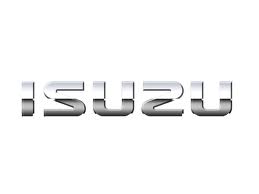Rodeo LSE 2WD V6-3.2L (1999)

Jump Starting: Service and Repair
Jump Starting with an Auxiliary (Booster) Battery
CAUTION: Never push or tow the vehicle in an attempt to start it. Serious damage to the emission system as well as other vehicle parts will result.
Treat both the discharged battery and the booster battery with great care when using jumper cables. Carefully follow the jump starting procedure, being
careful at all times to avoid sparking.
WARNING: FAILURE TO CAREFULLY FOLLOW THE JUMP STARTING PROCEDURE COULD RESULT IN THE FOLLOWING:
1. Serous personal injury, particularly to your eyes.
2. Property damage from a battery explosion, battery acid, or an electrical fire.
3. Damage to the electronic components of one or both vehicles particularly.
Never expose the battery to an open flame or electrical spark. Gas generated by the battery may catch fire or explode.
Remove any rings, watches, or other jewelry before working around the battery. Protect your eyes by wearing an approved set of goggles.
Never allow battery fluid to come in contact with your eyes or skin. Never allow battery fluid to come in contact with fabrics or painted surfaces. Battery
fluid is a highly corrosive acid.
Should battery fluid come in contact with your eyes, skin, fabric, or a painted surface, immediately and thoroughly rinse the affected area with clean tap
water
Never allow metal tools or jumper cables to come in contact with the positive battery terminal, or any other metal surface of the vehicle. This will protect
against a short circuit.
Always keep batteries out of reach of young children.
Jump Starting Procedure
1. Set the vehicle parking brake.
If the vehicle is equipped with an automatic transmission, place the selector level in the PARK position. If the vehicle is equipped with a manual
transmission, place the shift lever in the NEUTRAL position. Turn OFF the ignition.
Turn OFF all lights and any other accessory requiring electrical power.
2. Look at the built-in hydrometer.
If the indication area of the built-in hydrometer is completely clear, do not try to jump start.
3. Attach the end of one jumper cable to the positive terminal of the booster battery. Attach the other end of the same cable to the positive terminal of
the discharged battery.
Do not allow the vehicles to touch each other. This will cause a ground connection, effectively neutralizing the charging procedure.
Be sure that the booster battery has a 12 volt rating.
4. Attach one end of the remaining cable to the negative terminal of the booster battery. Attach the other end of the same cable to a solid engine
ground (such as the air conditioning compressor bracket or the generator mounting bracket) of the vehicle with the discharged battery. The ground
connection must be at least 450 mm (18 in.) from the battery of the vehicle whose battery is being charged.
WARNING: NEVER ATTACH THE END OF THE JUMPER CABLE DIRECTLY TO THE NEGATIVE TERMINAL OF THE DEAD
BATTERY.
5. Start the engine of the vehicle with the good battery.
Make sure that all unnecessary electrical accessories have been turned OFF.
6. Start the engine of the vehicle with the dead battery.
7. To remove the jumper cables, follow the above directions in reverse order.
Be sure to first disconnect the negative cable from the vehicle with the discharged battery.
